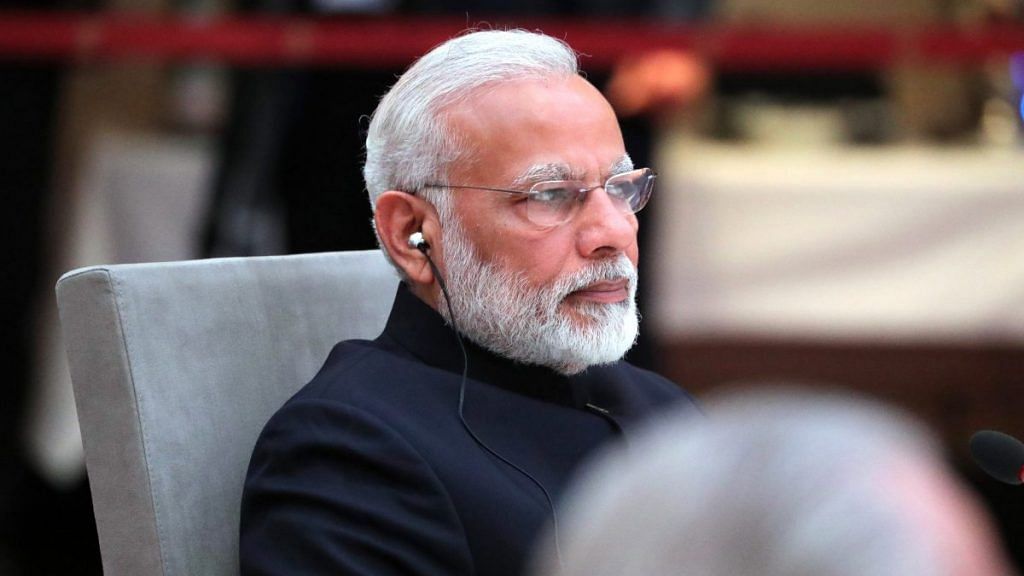What many commentators seem to have overlooked is the fact that constructing national majorities is no longer just an arithmetical formula consisting of seat-by-seat verdicts.
A year is left for the next Lok Sabha elections, but speculations about the results have already begun. A consensus of sorts has emerged among many commentators that the Bhartiya Janata Party (BJP) is on the downhill, and even if the party emerges as the frontrunner, it is unlikely to be anywhere near its 2014 performance.
Four possible scenarios are being listed by these commentators: a BJP-led government without Modi as the prime minister; a Congress-led government supported by other parties; a Third Front government; or perhaps a hung House necessitating fresh elections.
There are good reasons why such speculations have gained momentum in the past few weeks. The BJP was pushed to a corner in the high-pitched battle in Gujarat and suffered a massive defeat in the Rajasthan bypolls. The government’s performance on the economic front has been rather modest, and politically it has not dealt well with social tensions in many parts of the country. Furthermore, the opposition along with the newly appointed Congress president, Rahul Gandhi, has been consistently strident in attacking the BJP government.
Would this be enough to dislodge Modi and BJP?
In our view, the evidence available at the moment is not strong enough to rule out Modi’s return to power. The time-series data collected by Lokniti-CSDS (Centre for the Study of Developing Societies) indicates that there hasn’t been any major change in the popularity of the BJP and Modi vis-à-vis 2014.
In the latest round of the CSDS survey conducted in January 2018, more than one-third of the respondents (34 per cent) stated that they would vote for the BJP if Lok Sabha elections are held immediately. It is true that surveys often tend to overestimate the popularity of the ruling party, but even after discounting for that, there seems to be no major change in electoral support for the BJP. Furthermore, the preference for Modi as the prime minister also remains strong at the moment.
There is indeed a decline in the popularity of the BJP and Modi in comparison to the last survey held in April 2017 (See figure 1 and 2). However, to consider this as a signal for BJP going downhill is statistically presumptuous.
Figure 1: Voting intent in recent surveys
Figure 2: Prime ministerial preferences
Note: Preference for Manmohan Singh and Sonia Gandhi have been added to Rahul Gandhi’s figures.
The 2017 survey was conducted right after the BJP’s historic victory in Uttar Pradesh and a decline in support as compared to a high point must be interpreted with caution. To be able to say anything meaningful about the 2019 scenarios mentioned above, one needs two more, or at least one more data point, to confirm a declining trend. As of now, the available evidence suggests that there is no change with respect to the 2014 baseline.
Electoral contests are largely about who controls the narrative during the campaign period. The BJP is clearly on the defensive at the moment, but whether the opposition would continue to have a home run for next twelve months is an open question. This control over the narrative may change hands many times before the real campaign for 2019 begins. It is very much expected that the BJP would do well in this round of elections in the North-East.
The Congress, on the other hand, seems to have given up on Nagaland and Tripura. Even in Meghalaya, it is not entirely sure of returning to power.
It is no surprise then that the Congress has already shifted its focus to Karnataka where the party seems to have an edge. The BJP may not start as the favourite, but it is too early to rule them out of the contest.
The Janata Dal (Secular) led by Deve Gowda is fighting a battle for survival and is making all efforts for building a pre-poll front (that includes BSP and NCP at the moment) with eyes on Vokkaliga and Muslim votes. If the JD(S) succeeds in its effort, the Congress would have a hard time coming back to power in the state.
Thus, all such scenario-building before the Karnataka results is an exercise in futility. These speculations seem to be driven by an old-style arithmetic of constructing national majorities – how many seats the party can win in each state.
Given that the BJP virtually swept Hindi-speaking states, winning 190 of 225 seats, analysts are counting the number of seats the party may lose in each state and thus arriving at a scenario in which Modi may no longer become the PM.
What many commentators seem to have overlooked is that with 2014, not only the nature of election campaigning but also the mechanics of constructing national majorities got transformed.
It is no longer just an arithmetical formula consisting of seat-by-seat verdicts. The campaign has become centralised and contests plebiscitary in nature. We have already seen how Modi turned the rising tide against the BJP in the last two weeks of campaigning. With Modi leading the BJP into 2019, and more than a year to go, all bets are off.
The authors are PhD students in political science at the University of California at Berkeley, US.
